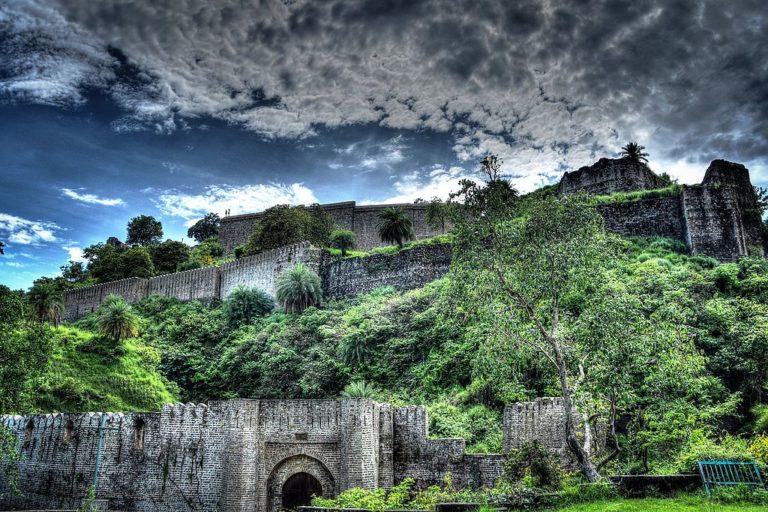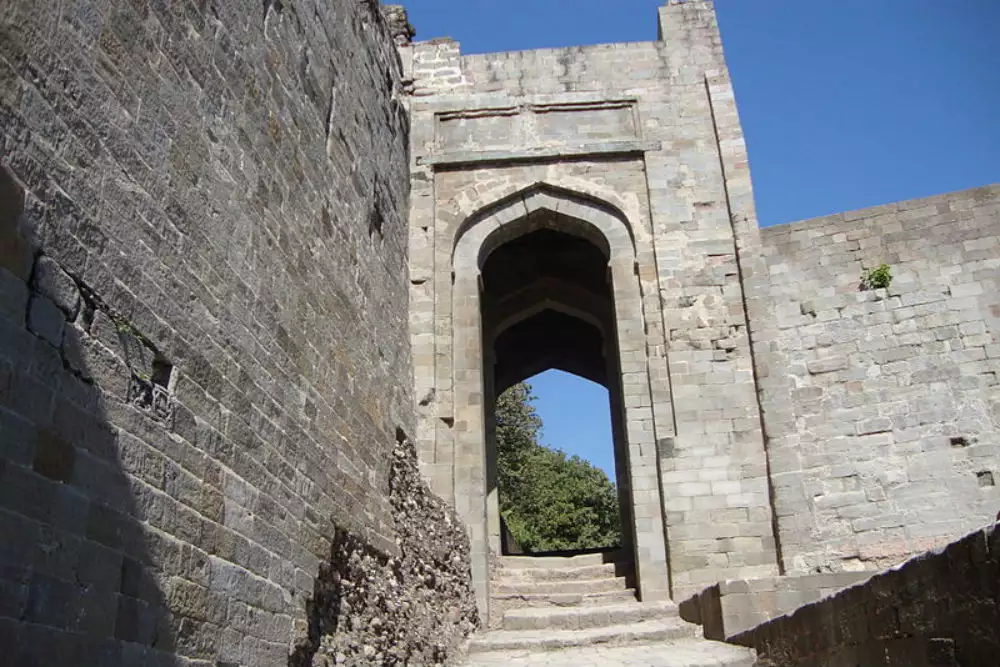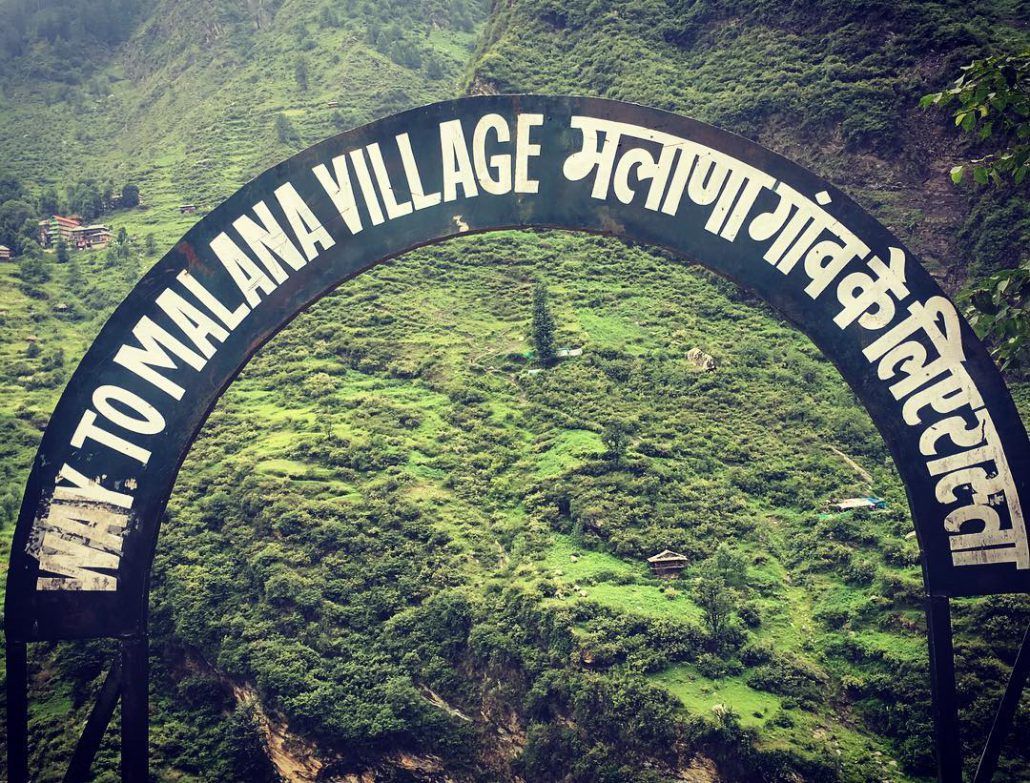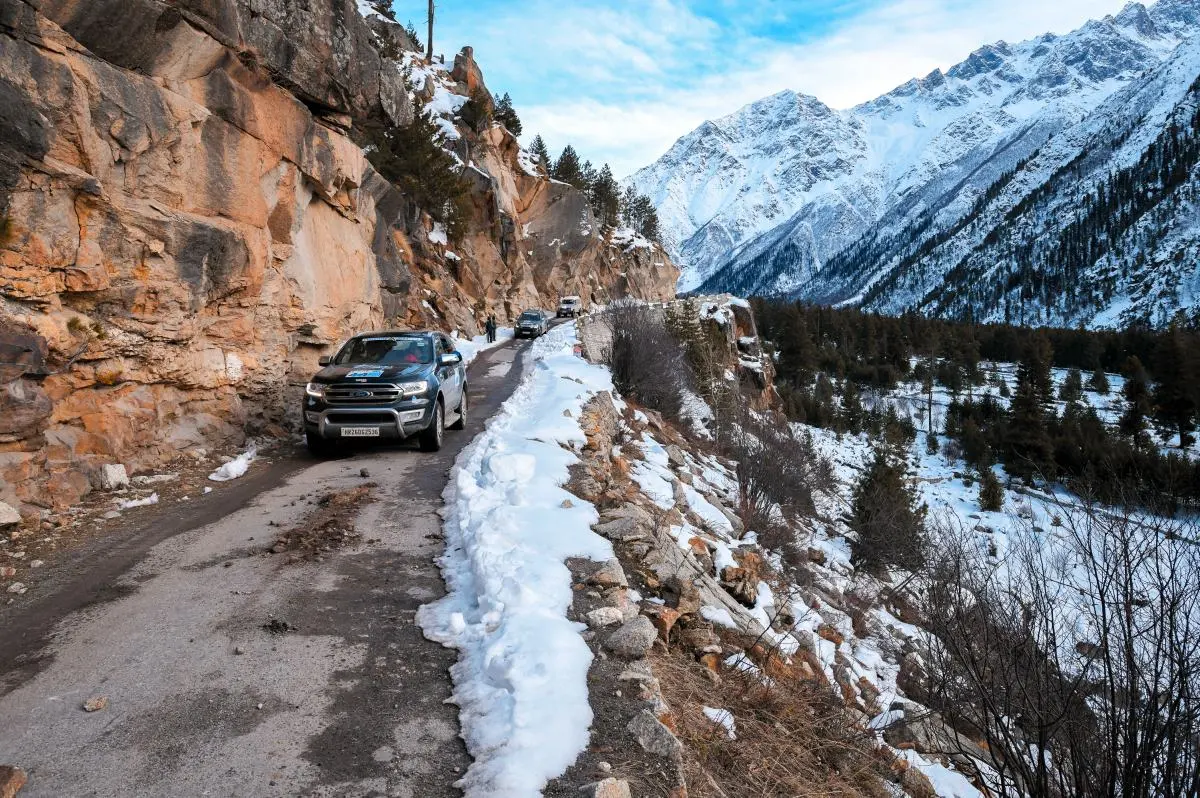Kangra Fort – The Historical Marvel Of Himachal Pradesh
Kangra Fort , situated in the Kangra district of Himachal Pradesh, is one of the oldest and largest forts in India. It holds historical and architectural significance, making it a captivating destination for history enthusiasts and tourists alike.


How to Reach
Historical Overview
The origins of Kangra Fort are shrouded in legends and myths that intricately connect the fort’s history with the ancient Katoch dynasty. According to mythological tales recounted in the Markandeya Purana, the roots of the Katoch clan trace back to the epic battle of Raktbeej Vadh. Legend has it that during this battle, Goddess Ambika faced the formidable demon Raktbeej, who had the ability to resurrect with every drop of his blood that touched the ground. In a pivotal moment, a drop of the goddess’s sweat fell to the earth, giving rise to the first Katoch, Bhumi Chand. Bhumi Chand is said to have played a crucial role in aiding the goddess in overcoming the demon, and as a reward, he was granted the kingdom of Trigarta, encompassing the land of the three rivers – the Ravi, the Beas, and the Sutlej. The region of Kangra is an integral part of this historical realm. References to the Katoch dynasty can also be found in the ancient epics, the Ramayana and the Mahabharata.
Local legends attribute the construction of Kangra Fort to Rajanaka Susharma Chand. According to the folklore, following his defeat in the battle of Mahabharata as an ally of the Kauravas, Susharma Chand sought refuge at the confluence of two rivers and played a pivotal role in establishing the fort.
Sir A. Cunningham, an eminent figure in Indian archaeology, has provided historical insights by revealing the first recorded reference to Kangra, then known as Jalandhara, in Ptolemy’s texts. The historical record identifies the Katoch King Parmanand Chand as the renowned King Porus, celebrated for his triumph over Alexander the Great. Etymologically, the term “Kangra” is believed to have evolved from “Karna Garh,” a name rooted in ancient history. Jalandhar, in ancient times, covered an extensive territory named after the demon Jalandhar, supposedly vanquished and buried by Lord Shiva. As King Susharma Chand chose to construct the fort over the area corresponding to Jalandhar’s ear (known as “karna” in Sanskrit), it acquired the name “Karna Garh.” Over time, this name transformed into “Kan Garh” in Hindi before evolving into the present-day “Kangra.”
Also read – https://himachal.blog/shri-ram-mandir/
Architecture of Kangra Fort
Kangra Fort’s architectural splendor reflects a harmonious blend of Hindu and Mughal influences. The fort is strategically positioned on a precipitous ridge overlooking the confluence of the Banganga and Manjhi rivers. Enclosed within massive walls and reinforced by bastions and watchtowers, the fort stands as a formidable structure.
The entrance, known as the Ranjit Singh Gate, welcomes visitors with intricate carvings and historical significance. Inside, the Sheesh Mahal, or Palace of Mirrors, captivates with its reflective surfaces, showcasing the artistic brilliance of its creators. Bastions and watchtowers not only served defensive purposes but also provided panoramic views of the Kangra Valley, ensuring the fort’s strategic importance.
Attractions of Kangra Fort
1. Ranjit Singh Gate: The main entrance to Kangra Fort is known as the Ranjit Singh Gate, named after Maharaja Ranjit Singh. This gate is adorned with intricate carvings and serves as a historic entry point.
2. Ambika Devi Temple: Located within the fort, the Ambika Devi Temple is dedicated to Goddess Ambika. The temple’s architecture and religious significance make it a notable attraction for visitors.
3. Sheesh Mahal (Palace of Mirrors): The Sheesh Mahal is a stunning structure within Kangra Fort that features mirrors embedded in the walls. This palace reflects the artistic brilliance of the bygone era.
4. Viewpoints and Panoramic Scenery: Kangra Fort offers breathtaking views of the surrounding Kangra Valley and the Dhauladhar Range. Several viewpoints within the fort provide visitors with an opportunity to enjoy the panoramic scenery.
5. Bastions and Watchtowers: The fort’s bastions and watchtowers not only serve historical and defensive purposes but also offer excellent vantage points for visitors to admire the landscape.
6. Historical Artifacts and Exhibits: The fort may house historical artifacts, sculptures, and exhibits that provide insights into the cultural and historical heritage of the region. Visitors can explore these exhibits to learn more about Kangra’s history.
7. Water Reservoirs and Channels: The water management systems within the fort, including reservoirs and channels, are not only functional but also add to the architectural and historical interest of the site.
8. Cultural and Religious Significance: The cultural and religious significance of Kangra Fort is evident in the presence of temples and religious structures. These sites attract pilgrims and those interested in exploring the religious heritage of the region.
9. Architectural Grandeur: The overall architectural design of Kangra Fort, including its massive walls, gates, and various structures, showcases a blend of Hindu and Mughal influences. The fort itself is an architectural marvel.
10. Reservoirs and Water Channels: The fort features reservoirs and water channels that were crucial for meeting the water needs of the occupants during times of siege. These water management systems highlight the strategic planning of the fort’s architects.
Conservation Efforts:
In recognition of its historical and cultural significance, efforts have been made to conserve Kangra Fort. Restoration initiatives address structural issues, and conservation of artistic elements ensures the preservation of the fort’s aesthetic value. Collaborations with heritage organizations, community engagement, and the integration of modern technologies contribute to the ongoing conservation endeavors.
Conclusion
Kangra Fort stands as a living testament to the resilience of history, surviving the sands of time and preserving the essence of an era long gone. Its towering walls echo with the tales of valor, mythological legends, and architectural brilliance. As visitors traverse the corridors of Kangra Fort, they embark on a journey through time, unraveling the layers of a fortress that stands as a guardian of the Kangra Valley’s rich heritage.














